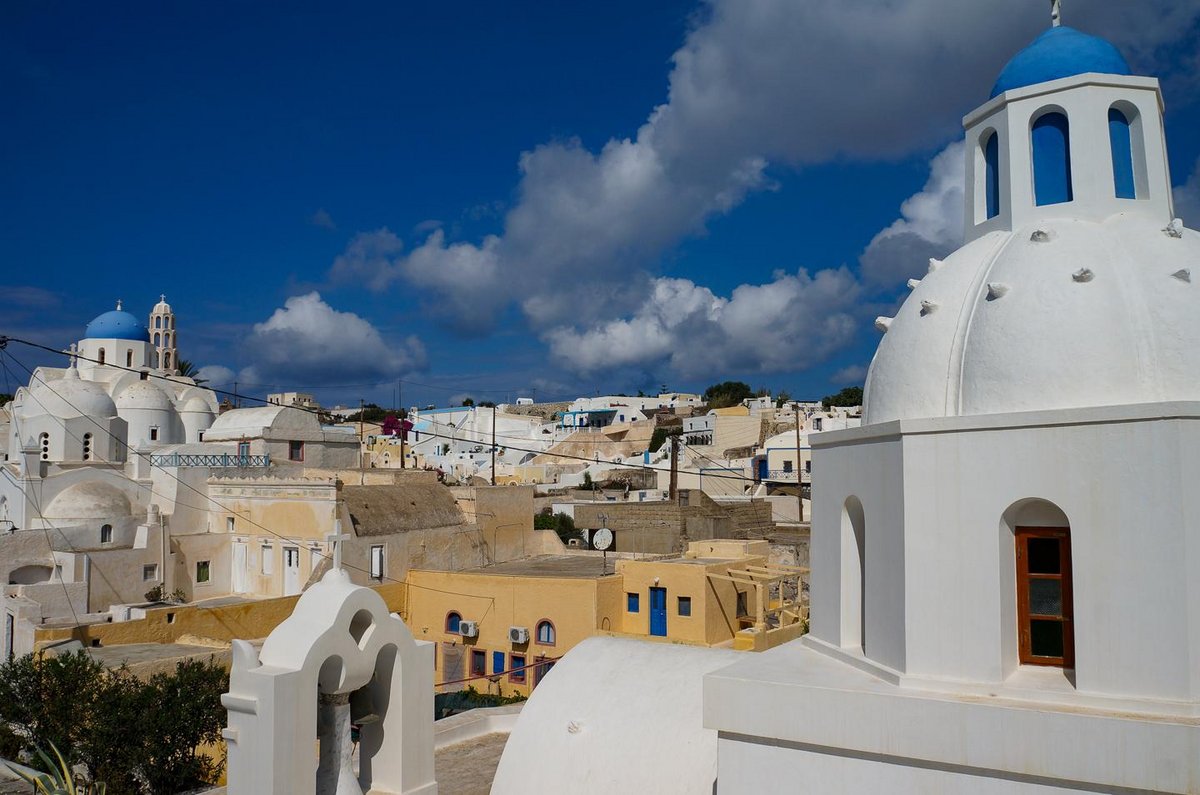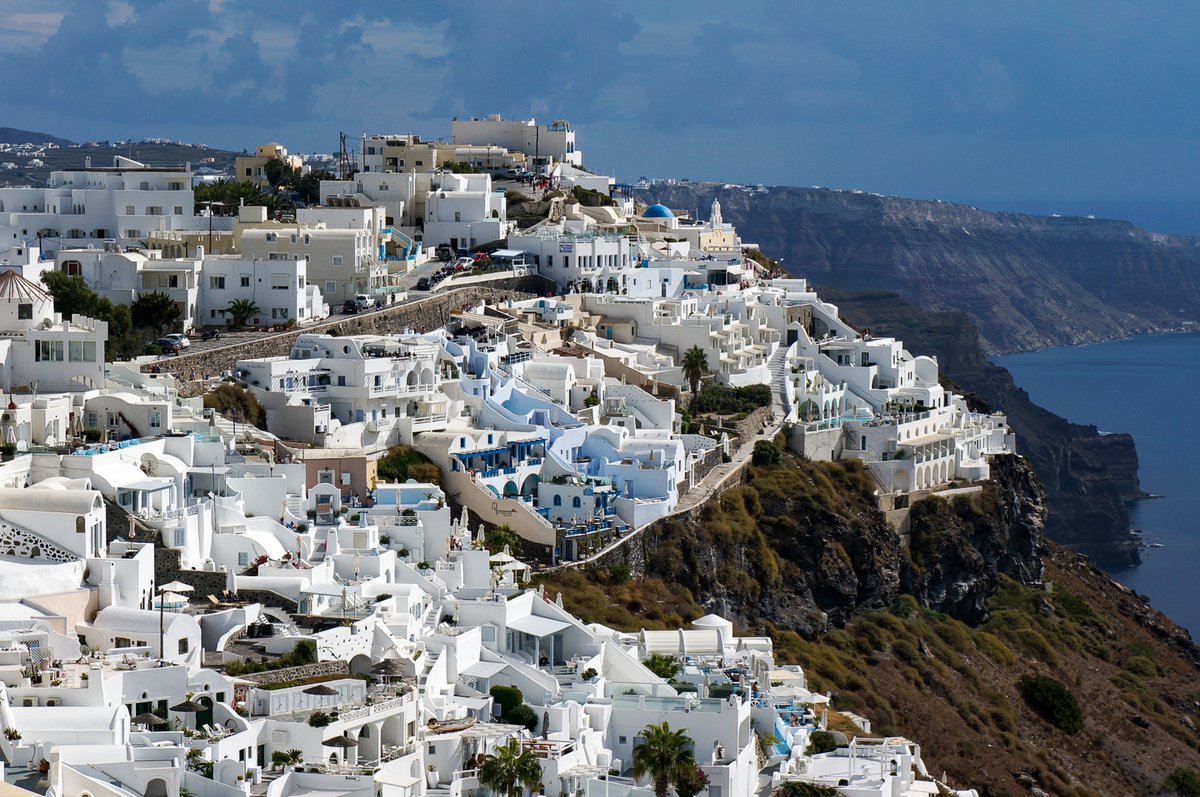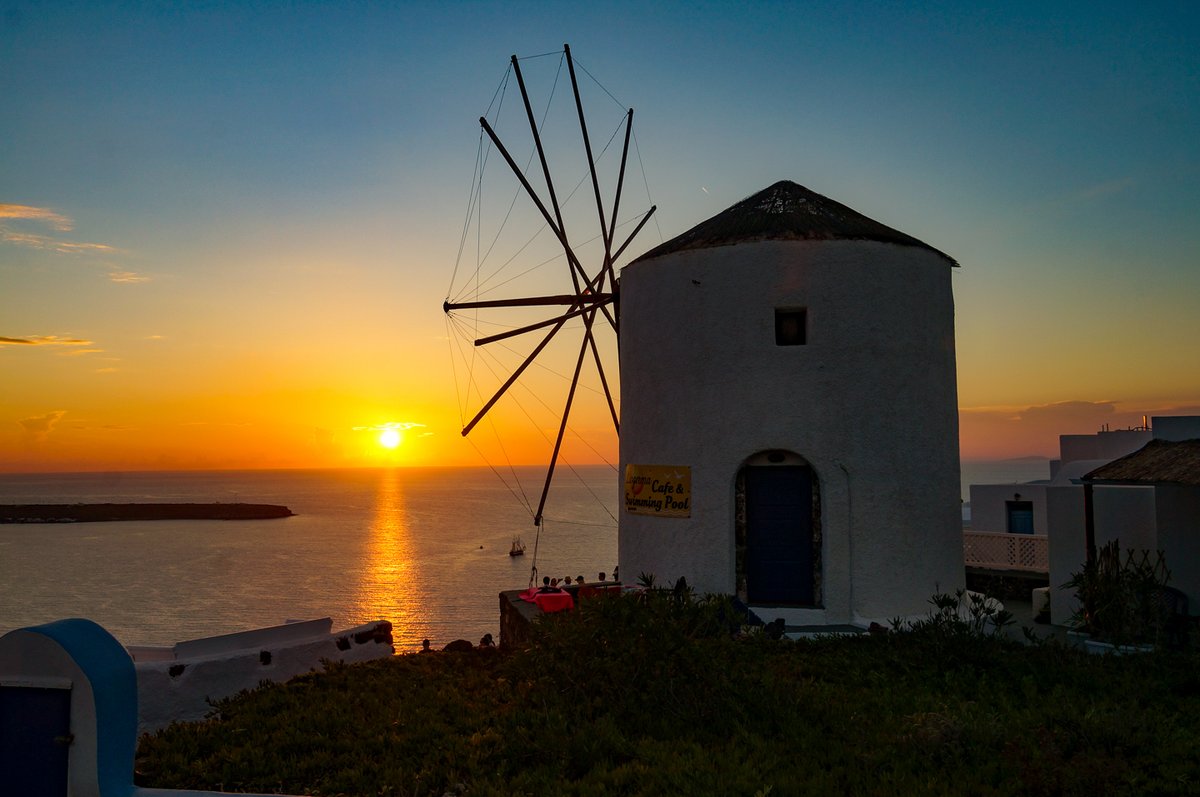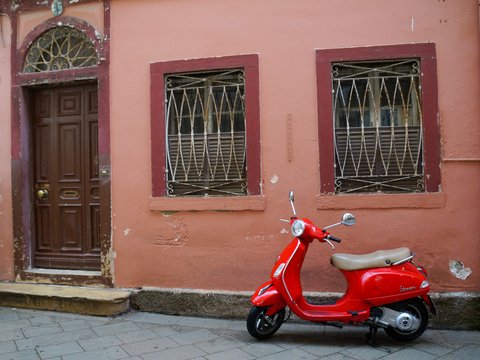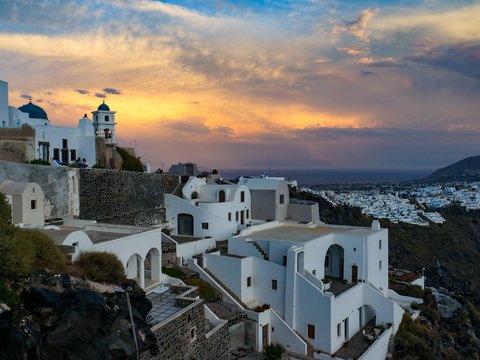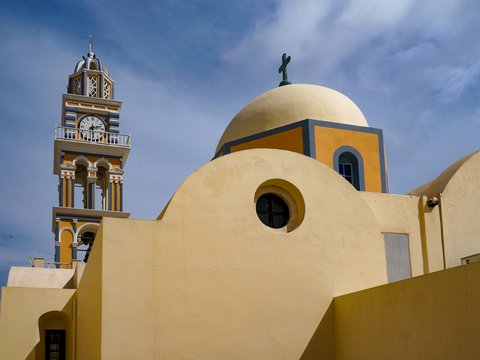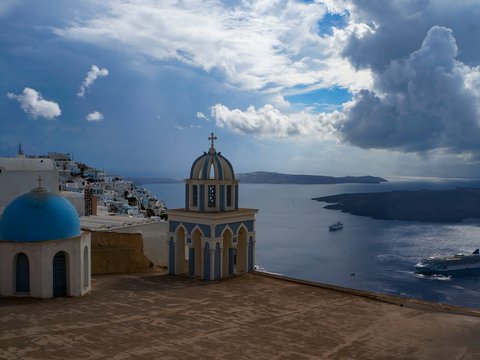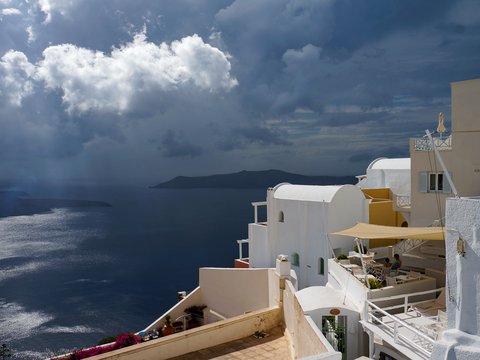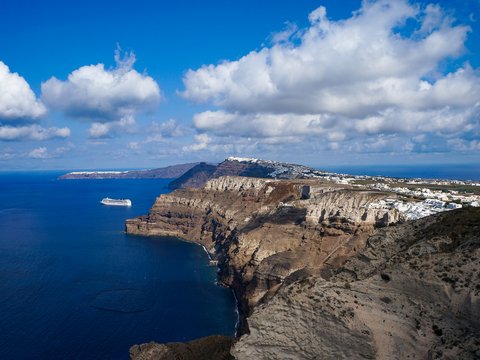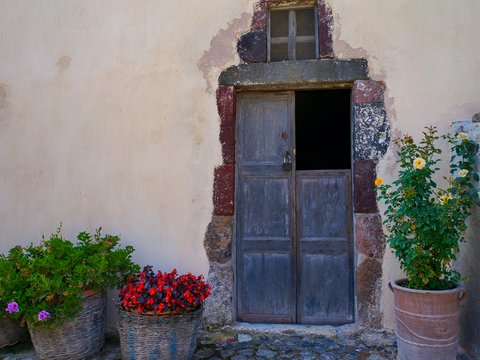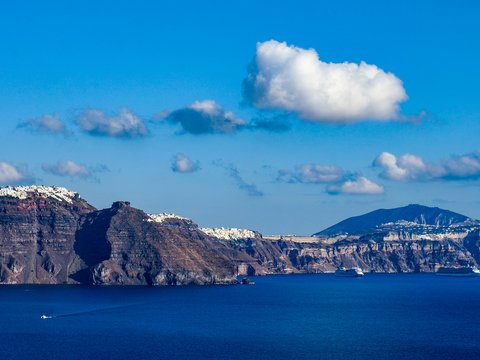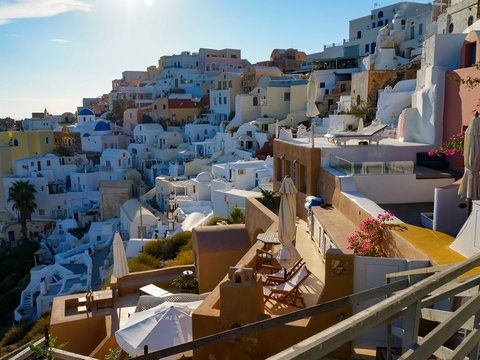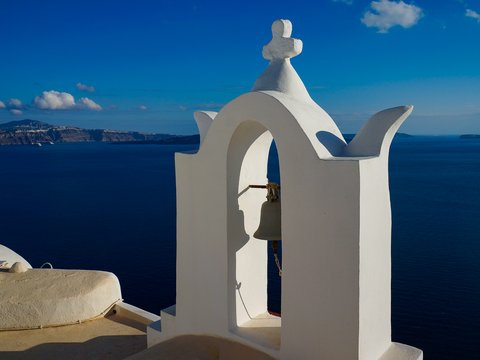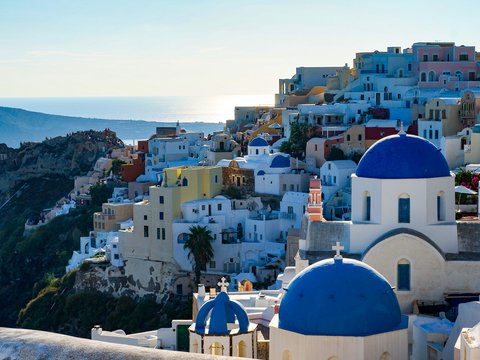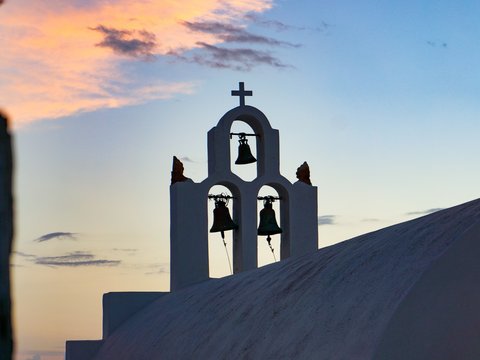Santorini is a "postcard" island that typifies Greece: white houses with blue doors and windows, blue domes, bell towers, the steep rim of the crater with villages stuck to the cliffs, black and red beaches and world-famous sunsets.
The island of Santorini is famous for its white villages, azure waters and caldera. The volcano of the Greek Aegean Sea was formed by eruptions thousands of years ago. The western edge of the volcano is partially submerged in the sea. To really experience Santorini and enjoy it 24 hours a day, you should look for accommodation along the edge of the crater whenever possible. Fira, Firostefani, Imerovigli or Oia, the four villages are well located, so it is difficult to make a recommendation.
During the low season, you can also find some cheap offers here. I chose Firostefani. From there, you can enjoy the magnificent view of Imerovigli - by having breakfast on the terrace or relaxing at sunset in the Jacuzzi - and you can quickly walk to the Fira, the main city.
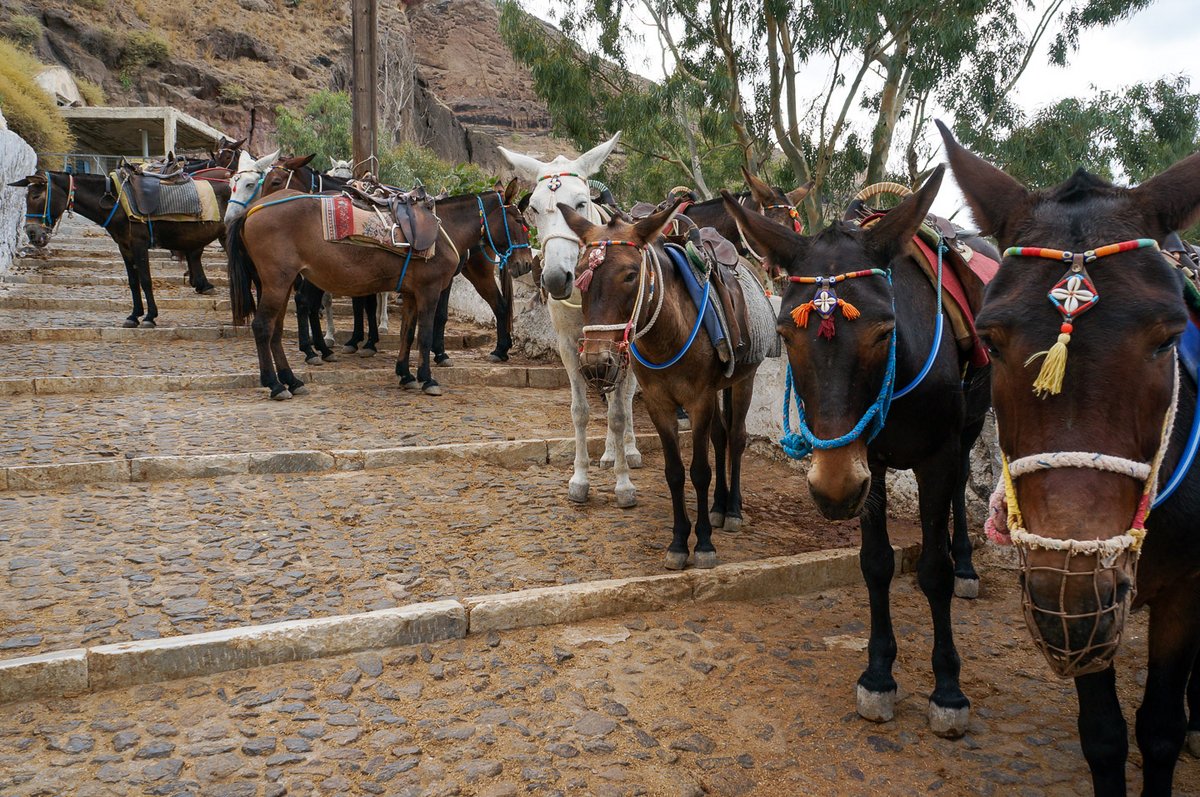
After moving into your holiday home, you can explore the picturesque villages by rental car. The distances are short and the roads are quite good. A visit to the main town is most pleasant when there is no cruise ship in the harbour. Otherwise you won't get much to see of the pretty town except a lot of photo and shopping tourists. A stroll through the picturesque alleyways is recommendable; numerous galleries and jewellers invite to go shopping.
Four museums tell the history of the island or how about a visit to the cathedral: large wall paintings do not only decorate the bishop's church of the island, but also allow deep insights into orthodox theology. Fira's obligatory programme also includes the old harbour, which can be reached on foot over 587 steps and almost 300 metres further down at sea level. After a refreshment in one of the numerous bistros, you can go up again on foot or take the cable car. For those who like it very traditional and cosy, countless mules and donkeys and their owners are waiting for numerous customers.
For those who want to do even more sports, a well-marked 3-hour trail on an old cobblestone and over lava scree through volcanic wonders from Fira to Oia is recommended, which can also be interrupted on the way and returned by bus. On this hike the view of the Caldera Santorinis is even more intense.
Oia is my favorite place. In the Caldera wall, the pretty hotels and cave dwellings are stacked on top of each other. The marble paved crater edge alley invites to stroll. The village centre in the very west is characterised by old captain's houses and from the castle ruins at the outermost edge of the village the view reaches far into the Aegean Sea. A great place to enjoy a cool drink at sunset.
For those who want to combine history with pleasure, a day trip to the south is recommended. More than 3600 years ago, people lived in multi-storey houses with water connection and sewerage in the excavation site Akrotiri. After a detailed inspection the Red Beach attracts: volcanic slags shimmering in the most different red shades have given the beach of lava sand its name. You can reach it by a 20-minute hike or a short boat trip. Sunshades are rented and a simple beach bar provides for the physical well-being.
Speaking of food: Below Oia's in the Amoudi harbour on the narrow quay a lukewarm summer evening in one of the inviting taverns with freshly caught fish and Greek wine can be finished off perfectly.

To properly prepare for your trip
How you get there:
from Zurich non-stop with Edelweiss to Tromsø
How long am I supposed to go:
2 - 3 weeks
Best travel time:
Summer for Midnight Sun / Winter for Northern Lights
Highlights:
Beaches in Lofoten, North Cape, pure nature
Booking tip:
Camper at www.rent-easy.de or
Complete program at www.kontiki.ch
More info:
www.visitnorway.com
Realised by Michael Bachmann
Further travel pictures under www.kissed-by-nature.com
